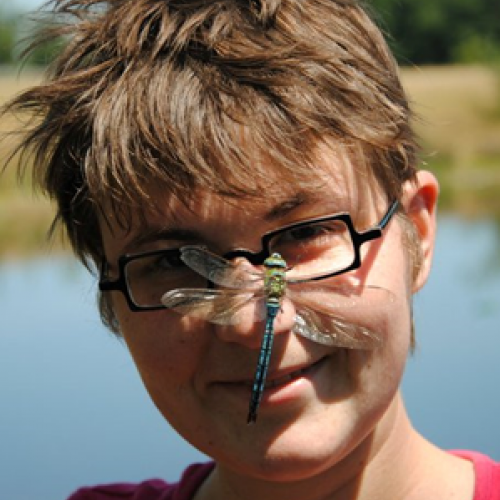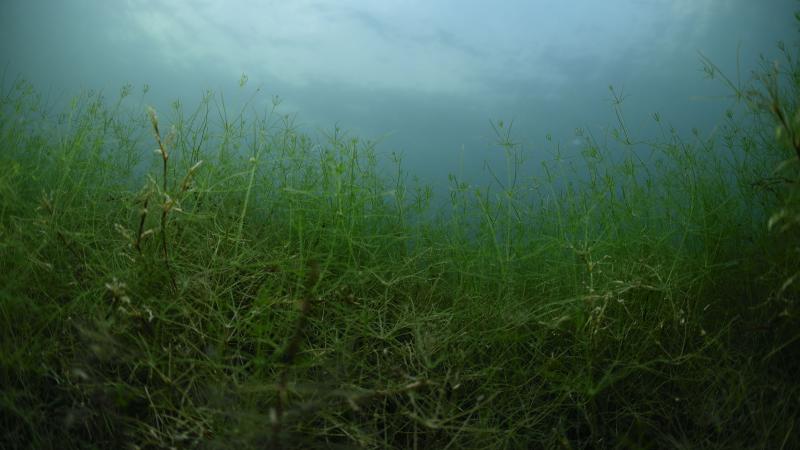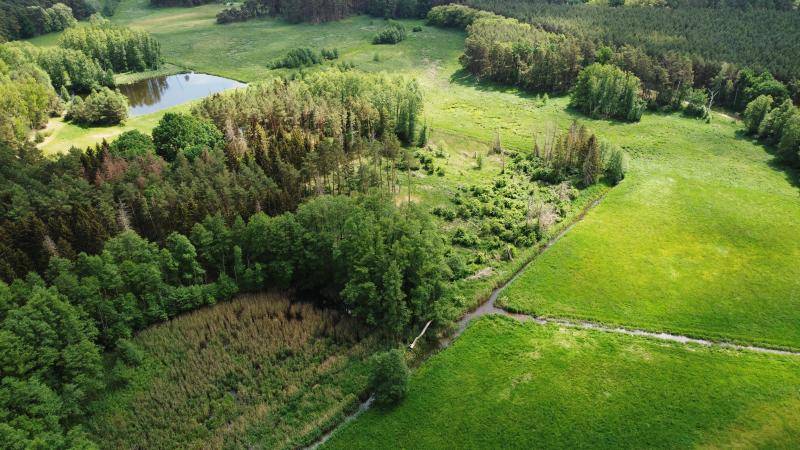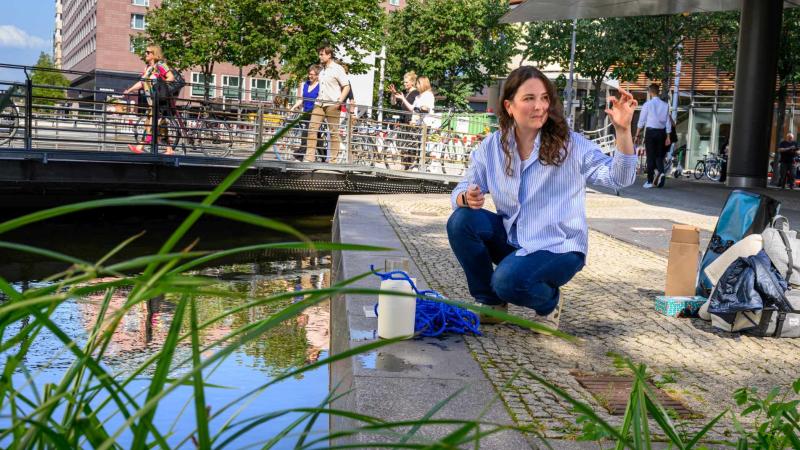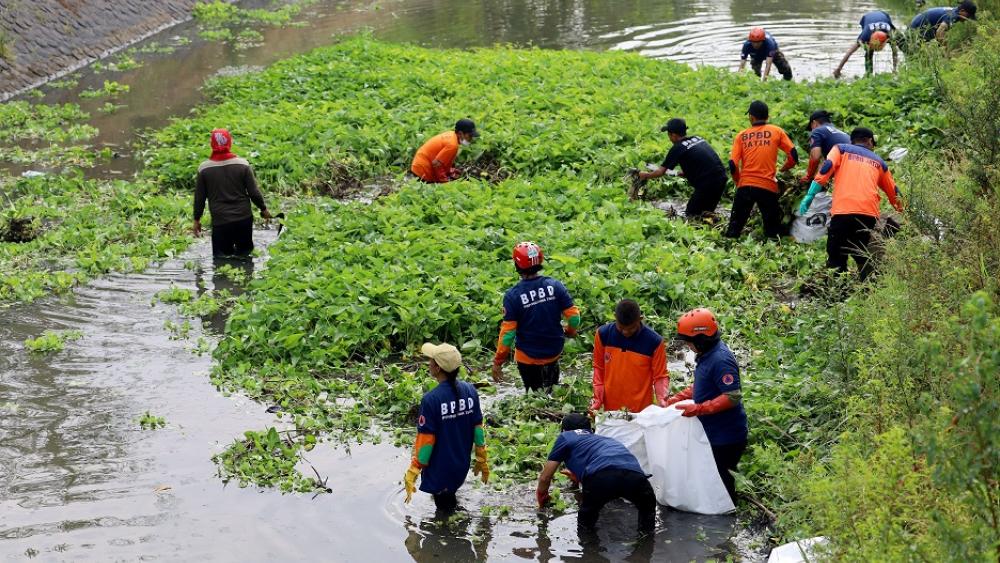
Surabaya Indonesia, November 2023: The East Java BPBD team removes water hyacinths that clog the river channel and provoke flooding. | Photo: shutterstock_2388525541
Invasive aquatic plants and semi-aquatic species growing along the shoreline of water bodies are introduced by vectors such as boats or birds, but are also purposely planted or dumped in water bodies. Many can become established due to changes in environmental conditions as a result of climate change. They affect ecosystems by changing the complexity and structure of habitats, reducing biodiversity and promoting homogeneous communities. They also cause major economic damage in aquaculture, fisheries or energy production, lead to losses in tourism and recreation, and require large investments for control and regional elimination.
"The impacts are diverse and often not immediately apparent or predictable. For example, mass developments of invasive aquatic plants can increase the risk of flooding by clogging water bodies with their large biomass. They can also contribute to water scarcity and severe droughts by increasing evapotranspiration, or increase the reproductive success of pests and disease vectors by creating new habitats, for example for mosquitoes," said first author Rafael L. Macêdo, a scientist at IGB and the Brazilian Federal University of São Carlos.
Public welfare and fisheries hit hardest
The researchers used data from the InvaCost database to break down the known costs by sector: Public and social welfare ($8.9 billion) and fisheries ($7.6 billion) were the hardest hit, according to the study, followed by government investments in aquatic invasive plant management ($2.0 billion) and environmental impacts ($977 million). Agriculture ($24 million) and health ($25.5 million) had the lowest monetary impacts. The remaining 40.5% across all sectors was accounted for by mixed costs ($13.3 billion).
In terms of cost types, the highest proportion (85.8%) was for damage to or loss of resources ( $28.2 billion). In contrast, management costs were relatively low (4.8%), totalling only $1.6 billion. Their share was highest for upwelling aquatic plants and in the marine sector.
Time trend: costs will continue to rise
The researchers' mathematical modelling shows a clear increase in the known annual costs of invasive aquatic plants in recent decades, by three to four orders of magnitude since 1975. "However, it is important to note that in some cases our models show a plateauing trend in recent years. This is likely due to a lack of data in recent years since 2017. Costs could therefore be even higher in the future, taking into account the time lag in cost reporting and global trade and transport networks, all of which lead to high spreading pressure for new species," said Camille Musseau, IGB researcher and author of the study.
Freshwater plants account for 65 per cent of costs
The majority of the costs recorded (57 per cent) were attributable to multiple or unspecified plant species. However, the known species were predominantly freshwater plants: They accounted for 65.1 per cent of the costs (US$21.3 billion). Examples include the common water hyacinth (Pontederia crassipes) and waterthyme (Hydrilla verticillata), followed by brackish water plants (2.0 per cent; US$641 million) and the marine environment (0.4 per cent; US$146 million). 32.6 per cent ( US$ 10.7 billion) was not unidentified in the category "Various types of environment".
Too little data: No cost estimates for a quarter of the species
A major challenge is that the species causing the costs are not precisely named in many cost estimates. This makes it difficult to develop targeted countermeasures. Especially in countries where resources are limited," said Rafael L. Macêdo.
Moreover, for many of the species causing problems, the extent of the costs is often still unknown. "When we looked at the documented lists of known invasive aquatic plants, we found that there are no cost estimates for at least 26 species," explained the scientist.
Map with gaps
The recorded costs were also unevenly distributed across just a few countries, mainly in North America, Europe and Asia. And they were often far too low:
In West Africa, for example, water hyacinth is still a serious problem, despite efforts by contries such as Niger, Mali, Ivory Coast, Nigeria, Ghana and Senegal to control its spread. The authors have found that the cost of water hyacinth in South Africa is estimated at $5.5 million, while the economic impact of the infestation in African countries can exceed $100 million annually due to losses in fisheries and water quality problems.
Management considerations
Management options can be broadly categorised into physical, chemical, biological and integrated methods. Physical removal often creates small outcrops that continue to spread and regenerate; draining affects non-target organisms, and many aquatic plants survive draining for long periods of time.
"It is only possible to assess the cost-effectiveness of measures if the costs incurred by the invasive plant are known. This is especially true when it comes to the controversial use of pesticides in water bodies which can have an impact on native aquatic flora and fauna or on affect human health," said Camille Musseau.
If mechanical control methods are not effective in the medium term, complementary strategies can be used, but these incur additional costs, and some of these approaches are considered harmful to the environment and lead to the selection of resistant weeds and risks to human health, e.g. from herbicides.
Integrated control, which combines different methods, can be more effective than a single method as it tackles invasive species from multiple angles and reduces management costs. The potential use of removed plant material as a bioenergy source and phytoremediation are options that can help control ecological damage and provide some economic compensation.
The top ten most cost-intensive species
- Common water hyacinth (Pontederia crassipes): It is used worldwide as a pond plant and can overgrow inland waters in just a few weeks. The resulting lack of light can cause other aquatic plants and fish to die.
- Waterthym (Hydrilla verticillata): The ground nettle can also spread massively and block sunlight for other organisms in the upper 50 centimetres. It can also harbour potentially toxic cyanobacteria.
- Purple loosestrife (Lythrum salicaria): In areas where purple loosestrife populations are expanding, they can impair the flow velocity of rivers and canals.
- Salt reedgrass (Sporobolus cynosuroides): Salt marram grass displaces other species with detrimental consequences for soil organisms and microfauna due to its dense root system. More serious is the invasion of salt marshes, where it hinders the growth of other plants and alters the ecosystem, as the dense growth hinders the drainage of water.
- Alligatorweed (Alternanthera philoxeroides): displaces native species and threatens biodiversity.
- Green seaweed (Caulerpa taxifolia): It overgrows native seagrass meadows in the sea, destroying the basis of life for many creatures; it is also poisonous.
- Smooth cordgrass (Sporobolus alterniflorus): Effects see 4: Salt reed grass (Sporobolus cynosuroides)
- Floating pennywort (Hydrocotyle ranunculoides): Adverse effects on biodiversity, by displacing native aquatic plants. Forms dominant stands at the water's edge in stagnant to slow-flowing waters; oxygen deficiency can occur under dense stands. Adverse effects on fishing, shipping, tourism and water management.
- Canadian waterweed (Elodea canadensis): spreads massively and can thus threaten native vegetation and impair the management and utilisation of water bodies.
- Water fern (Azolla filiculoides): The large algae fern can lead to restrictions on the recreational use (e.g. boating, angling) of water bodies due to the mass populations that develop. The changes in water chemistry also jeopardise the use of water bodies as drinking water reservoirs.


